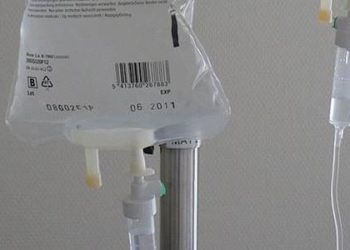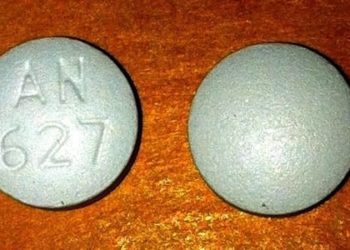Oxygen therapy for 15 versus 24 hours per day does not change hypoxemia-related mortality
1. In this randomized controlled trial, among patients with severe hypoxemia, long-term oxygen therapy used for 24 hours per day resulted in no reduction in risk of hospitalization or death within one year compared with oxygen therapy for 15 hours per day.
2. Oxygen therapy for 15 versus 24 hours per day was associated with similar patient-reported scores for fatigue, health status, and perceived overall well-being.
Evidence Rating Level: 1 (Excellent)
Study Rundown: Long-term oxygen therapy is an established treatment for prolonging survival among chronic, severe hypoxemia patients. Long-term oxygen therapy should be used for at least 15 hours daily, but recent evidence has indicated that 24 hours per day may prolong survival. However, this finding is challenged by observational data showing similar risks of hospitalization and death between the two groups. Additionally, long-term oxygen therapy is associated with adverse effects, restricted mobility, increased social isolation, and feelings of shame, which would be exacerbated with extended use of oxygen therapy. The present trial compared the effects of long-term oxygen therapy for 24 hours per day with those of oxygen therapy for 15 hours per day on the risk of hospitalization or death within one year and patient-reported outcomes, including fatigue, overall unpleasantness, health status, and perceived well-being. Compared to oxygen therapy for 15 hours per day, use for 24 hours per day resulted in a similar risk of hospitalization or death within one year and similar patient-reported scores in all measured domains. The study was limited by patients’ self-reporting of their daily oxygen use duration, as adherence may have been overreported. Nevertheless, these findings provide novel insights into the effects of long-term oxygen therapy use for 24 hours per day in patients with severe hypoxemia.
Click to read the study in NEJM
In-Depth [randomized controlled trial]: This registry-based randomized-controlled trial compared the effects of long-term oxygen therapy used for 24 hours per day with oxygen therapy used for 15 hours per day on the risk of hospitalization or death within one year and various patient-reported outcomes, including fatigue, overall unpleasantness, health status, and perceived overall well-being. Patients 18 years or older with a resting PaO2<55 mm Hg or a SpO2<88% while breathing ambient air or with a PaO2<60 mm Hg while breathing ambient air and signs of heart failure or polycythemia were included. The primary outcome was hospitalization or death from any cause within one year. Out of 1,693 patients who underwent screening, 117 were assigned randomly to receive long-term oxygen therapy for 24 hours per day and 124 to receive oxygen therapy for 15 hours per day. The mean rate of hospitalizations and deaths within one year in the 24-hour group was 124.7 events per 100 person-years (95% Confidence Interval [CI], 96.5 to 152.9) compared with 124.5 events per 100 person-years in the 15-hour group (95% CI, 97.0 to 151.9). Long-term oxygen therapy used for 24 hours per day was not superior to oxygen therapy for 15 hours per day, with a hazard ratio of 0.99 (95% CI, 0.72 to 1.36). Patient-reported scores for fatigue, overall unpleasantness, health status, and perceived overall well-being were also similar between the two groups at three and twelve months. In summary, long-term oxygen therapy used for 24 hours per day did not produce a significant difference in risk of hospitalization or death within one year compared with oxygen therapy used for 15 hours per day.
Image: PD
©2024 2 Minute Medicine, Inc. All rights reserved. No works may be reproduced without expressed written consent from 2 Minute Medicine, Inc. Inquire about licensing here. No article should be construed as medical advice and is not intended as such by the authors or by 2 Minute Medicine, Inc.









